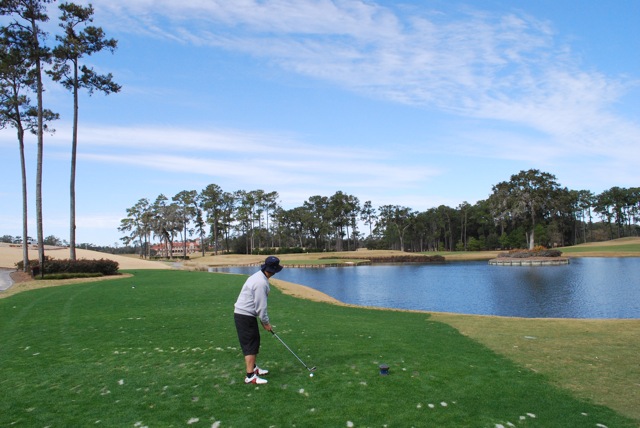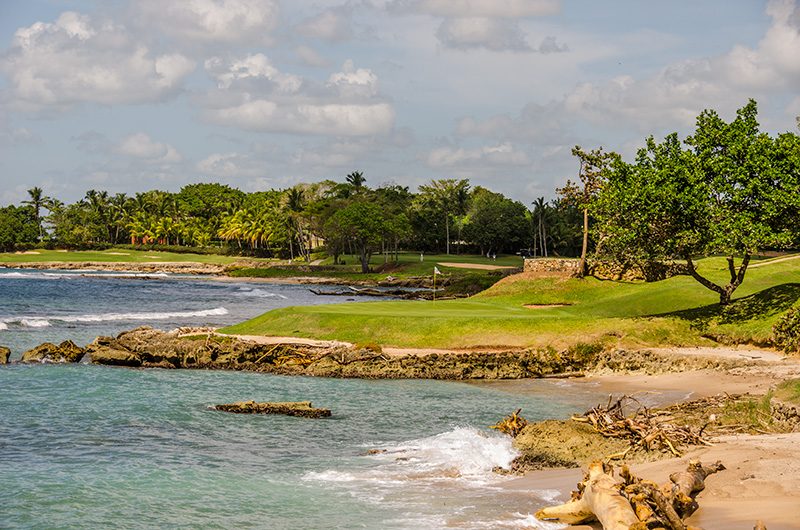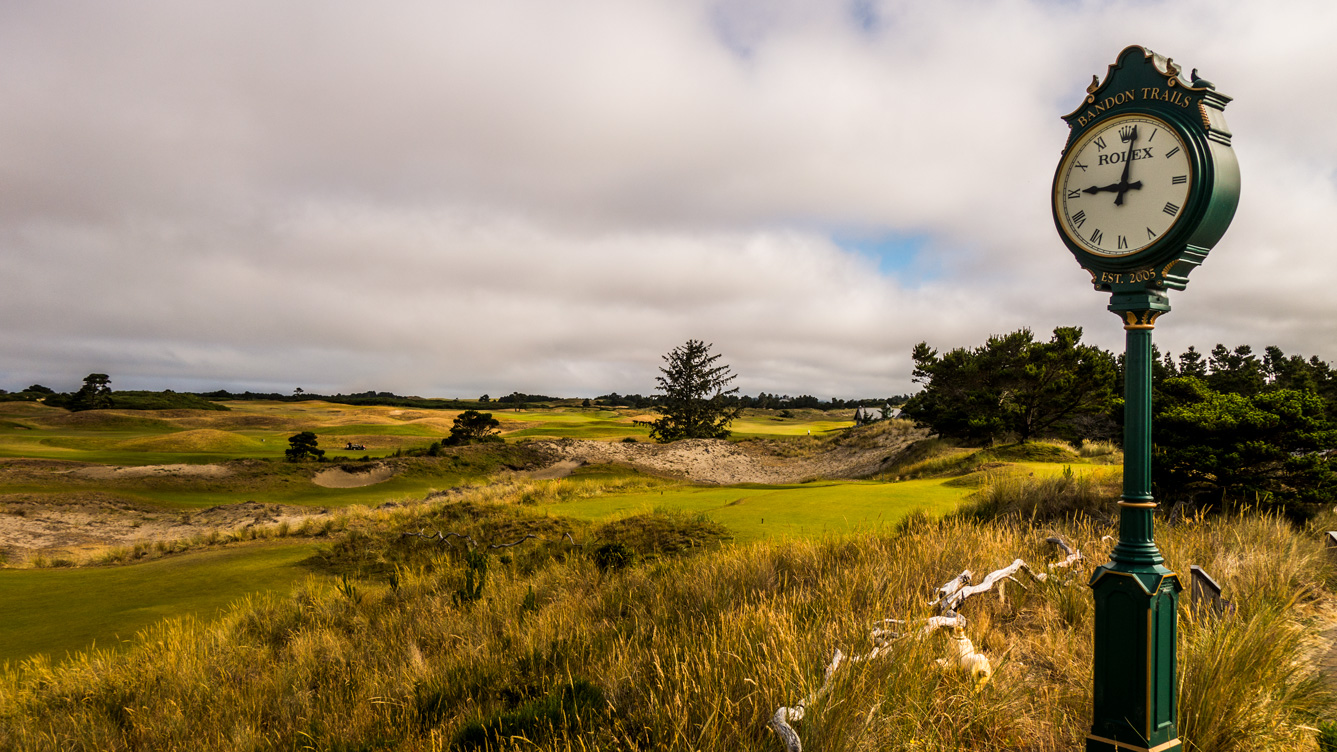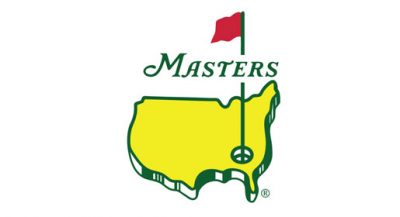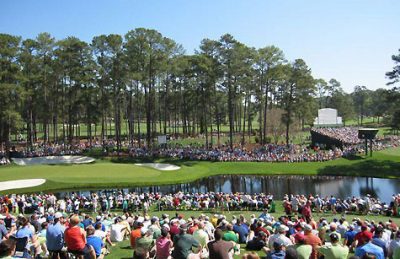RIP Pete Dye
Categories: Golf Courses
Tags: French Lick • Pete Dye • TPC Sawgrass
Today the golf world lost perhaps the most famous and well known golf course architect in history, Pete Dye. Pete Dye is famous for his, shall we say, “creative” architectural ideas like the island green 17th hole at TPC Sawgrass (photo below of me teeing off about to lose 3 balls and shoot a 9), or his “volcano bunkers” at the Dye Course at French Lick Resort (other photo below of me standing atop a volcano bunker). Most famously Dye loved to use railroad ties to border terrain features and create more intimidation for the player. It worked.
Dye has produced many proteges who in their own right are very successful course architects.
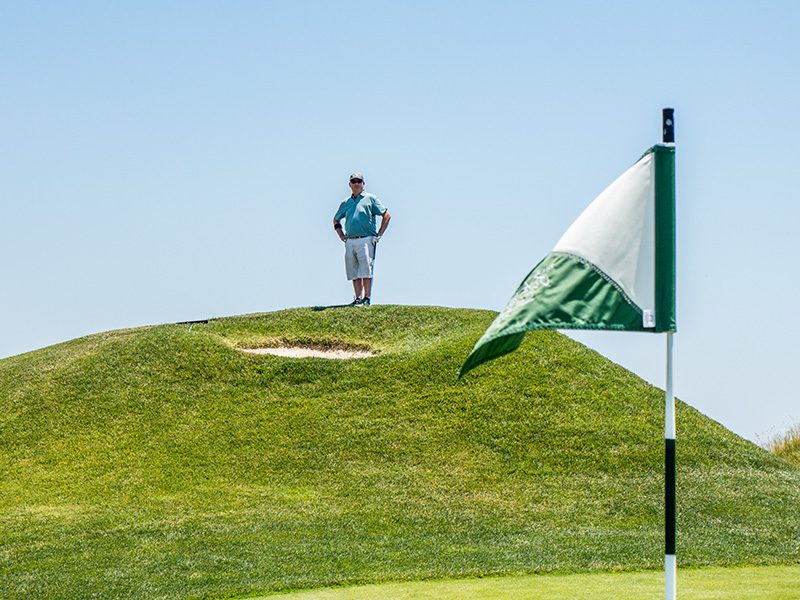 I’ve had the pleasure (and pain) of playing a few Dye designs including TPC Sawgrass Stadium Course, French Lick Resort’s Dye Course, and my favorite: Teeth of the Dog in the Dominican Republic (photo below). There’s even a Dye course here in northern Utah, about 30 minutes east. That one has a hole that’s 805 yards. Driver mid-iron… Right.
I’ve had the pleasure (and pain) of playing a few Dye designs including TPC Sawgrass Stadium Course, French Lick Resort’s Dye Course, and my favorite: Teeth of the Dog in the Dominican Republic (photo below). There’s even a Dye course here in northern Utah, about 30 minutes east. That one has a hole that’s 805 yards. Driver mid-iron… Right.
It’s surely a sad day for the golf world, but the good news is these memorable courses will live on, and continue to remind us about how unique, creative, and innovative Pete Dye was.
Sad to say I never had the opportunity to meet the man. Wish I had.
RIP
Hooked on Golf Blog 2016 Awards – Best Golf Course: Cruden Bay, Scotland
Categories: Golf • Golf Course Architecture • Golf Courses • Golf For Women • HOG World Tour • Product of the Year
Tags: Cruden Bay • French Lick • Golf Travel • Morocco • Pete Dye • Scotland
Each year my hard work on this golf blog provides me with the opportunity to visit many great golf courses all around the world. 2016 was a tremendous year for playing courses which I had not previously played, from the USA to Scotland to Morocco. To qualify for the Best Golf Course Award for the year, the course has to be one I had not played previously. I narrowed the finalists down to a eight stellar courses played this year:
Donald Ross Course at French Lick Resort, Indiana
Pete Dye Course at French Lick Resort, Indiana
Panmure Golf Links in Carnoustie, Scotland
Royal Aberdeen Golf Club, Scotland
Cruden Bay Golf Links in Cruden Bay, Scotland
Mazagan Golf Club at Mazagan Resort, Morocco
Royal Palm Golf Club in Marrakech, Morocco
Journey at Pechanga in Temecula, California
Those are some fantastic courses to say the least, in some fabulous locations. As great as they all are, one course stood out and not by just a wee bit either. Scotland’s Cruden Bay left me absolutely stunned. Here are a few picturesque reasons why.

Cruden Bay – ©2016 by Tony Korologos
The dunes above. What a view. Absolutely stunning.
How about the view below, from the 9th tee. It was a hell of a walk from the 8th green up to this point and despite nearly having a heart attack, the view was well worth it!
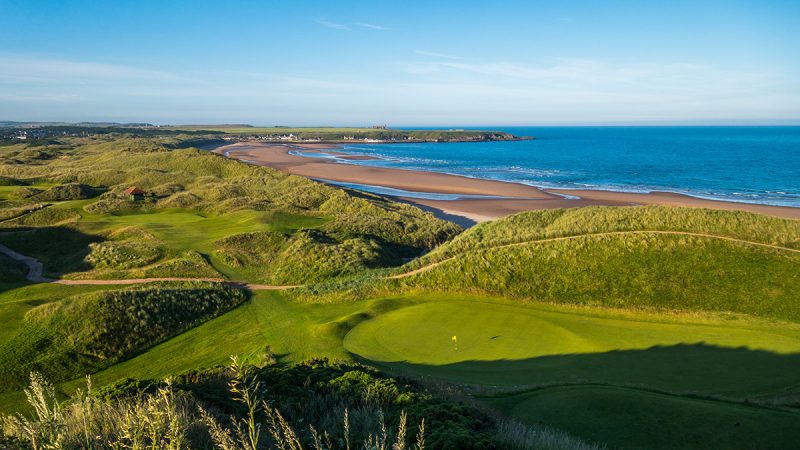
The golf at Cruden Bay is stellar. But it has a fun and very quirky personaly as well. Just ring the bell or push the button on the electric post to let the group behind you know it is okay to hit their approach shot.
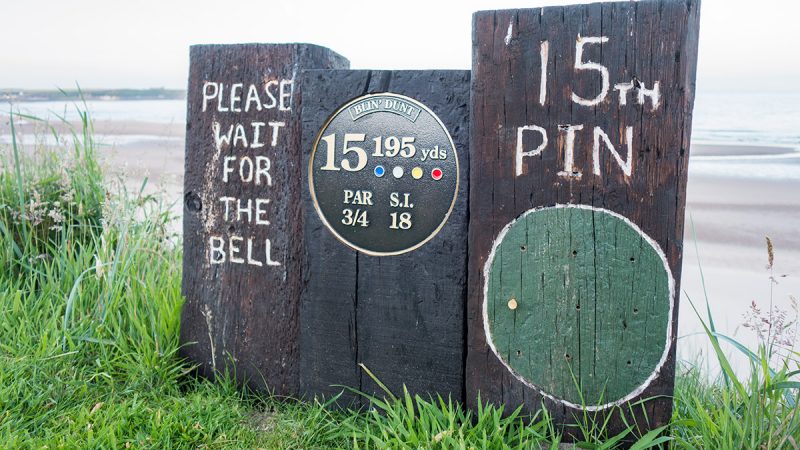
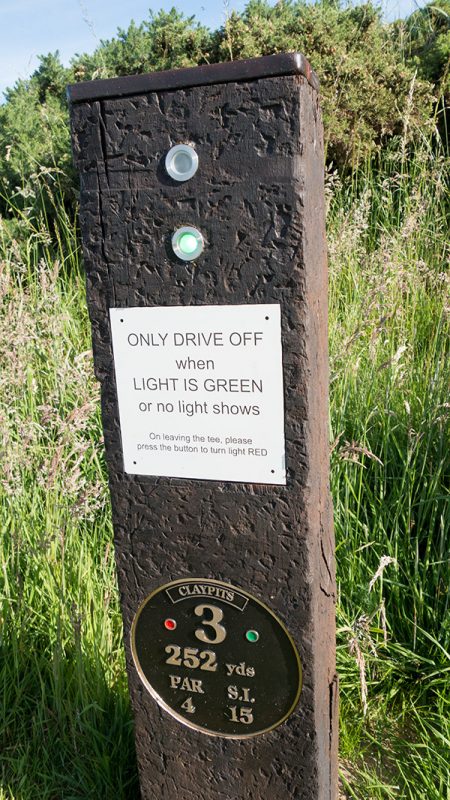
And because I want to see another money shot, here you go below. This one from late in the day as the sun was setting and the shadows began to really accentuate the terrain.
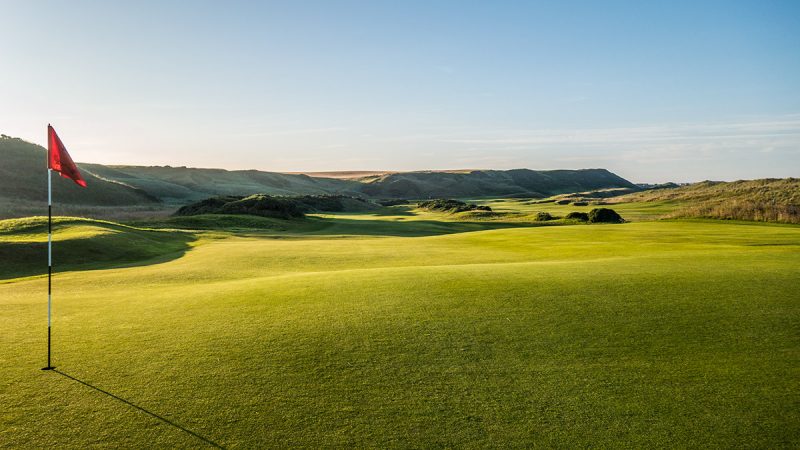
In the photo above you can see a plateau in the background. That’s where the shots I mentioned from the 9th tee were.
Conclusion
I’m in love. Cruden Bay is one of the top courses I’ve ever had the pleasure of experiencing.

Awarding Cruden Bay the 2016 Best Golf Course Award was a no-brainer, and it was up against Golf Digest Top 100 USA courses on my list. I will be back as soon as possible. What a fantastic course, design, location and the town of Cruden Bay is quite fun as well.
Golf Cigar Aficionado: Pete Dye Cigars
Categories: Cigars • Golf Life • Golf Lifestyle • Reviews
Tags: Cigars • French Lick • Indiana Golf • Pete Dye
For the first time in history, I spelled “aficionado” correctly without needing spell check or google… Yay me.
Today’s review is of a very unique golf and lifestyle product that not many golfers will get an opportunity to try, Pete Dye cigars. But since HOG is all about delivering unique and useful content which isn’t found elsewhere, I bring you this incredible bit of golf blogging.
 Pete Dye
Pete Dye
First off, one must know who Pete Dye is before going much farther into this review. For those who don’t know, Pete Dye is one of golf’s all-time greatest golf course architects. Dye is known for his “Dye-abolical” designs around the world. Some of his most notable courses include TPC Sawgrass which is home of THE PLAYERS Championship. Always write “THE PLAYERS” in ALL CAPS! It’s what they do. Other courses Dye is famous for include PGA West, Trump National LA, Harbour Town, Kiawah Island, Whistling Straits, Casa de Campo, Southern Hills.
Recently I played and reviewed a newer Dye course in Indiana at the French Lick Resort, named the “Dye Course.” I must say that was probably the toughest course I’ve ever played, and by a large margin. The picture above right is of me and Mr. Dye at French Lick.
At the conclusion of the $350 round, the Dye Course at French Lick rewards the golfer for surviving by giving him and his group a goodie box with whisky and Pete Dye cigars inside. Thus, this Pete Dye cigar review.
Pete Dye Cigars
First one might think that a course giving out cigars is going to be giving out crap quality smokes. Honestly, I expected that too. But one must realize that Dye has a lot of courses, and even a house in the Dominican Republic. Depending on who you talk to, some say Dominican cigars rival Cuban cigars. I love them both. So these cigars are no cheapos. No way. They’re actually VERY good.
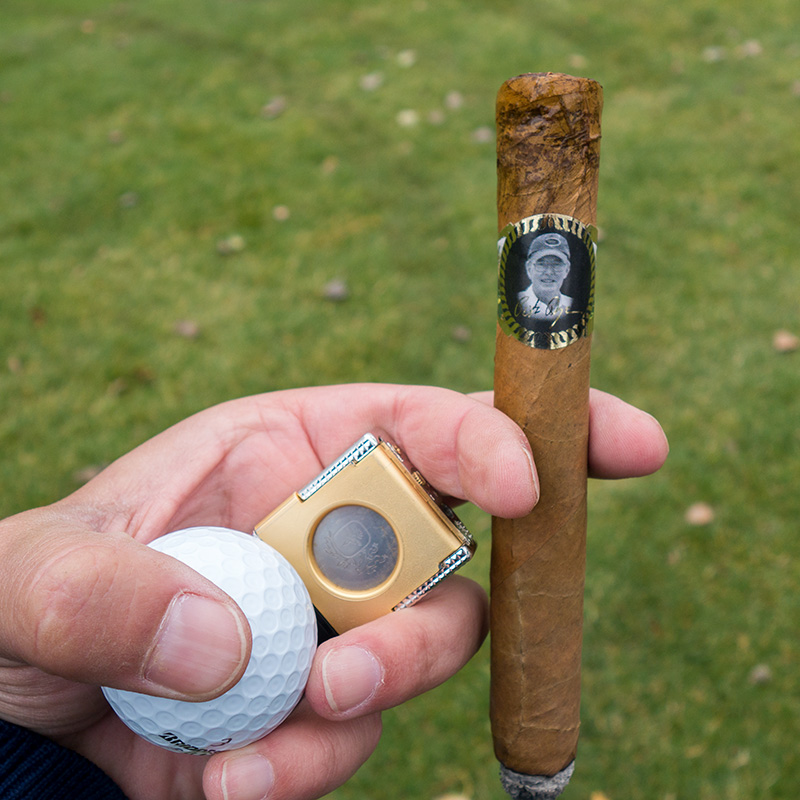
Pete Dye Cigars
This cigar is smooth and enjoyable. I’d call it a medium strength smoke. Through the life of the cigar, down to roach-clip-range, it was consistently flavorful. It didn’t get nasty at the end like come cigars do.
During one recent round I handed out these cigars to my pals. My golfing buddies who were with me that day enjoyed them very much. And as I usually do, I played my best golf with the cigar in action. I was EVEN PAR on the day. Thanks Pete. I can call you Pete, right?
Conclusion
I haven’t researched to find out if one can buy the Pete Dye cigars, or if so where they are available. The only place I know to get them is by playing golf at French Lick’s Dye Course. As good as these cigars are it just might be worth the $350/round cost to get them!
Review: Pete Dye Course at French Lick Resort
Categories: Course Reviews • Golf • Golf Courses • Golf For Women • HOG World Tour • Reviews • Travel
Tags: French Lick • Golf Travel • Indiana Golf • Pete Dye • Travel
It has taken a few weeks to process my experience at French Lick Resort’s Pete Dye Course. I was also slightly sidetracked by a little trip to Scotland in that timeframe. The dust in my golf cranium has settled. I’m ready to try and tackle this big review of a big golf course.
French Lick Location
First off, let’s get the location figured out. French Lick Resort is in Larry Bird country, the towns of French Lick and West Baden Springs in southern Indiana. The closest major city and airport is Louisville, Kentucky. Next would be Cincinnati and Indianapolis. The resort sits on a large and historic estate which dates back to 1845.
The Dye Course is a 5-10 minute drive from the West Baden Springs Hotel and the French Lick Hotel and Casino. The course lies on one of the highest points of elevation in Indiana, producing a 40 mile panoramic view.
Pete Dye Course Key Facts
First off, one must know who Pete Dye is. Pete Dye is a Hall of Fame golf course architect who has built some of the most famous courses in the world. Some of Pete Dye’s most notable courses include Kiawah Island Golf Resort, Harbour Town Golf Links, TPC Sawgrass Stadium (home of THE PLAYERS), Whistling Straits, and PGA West.
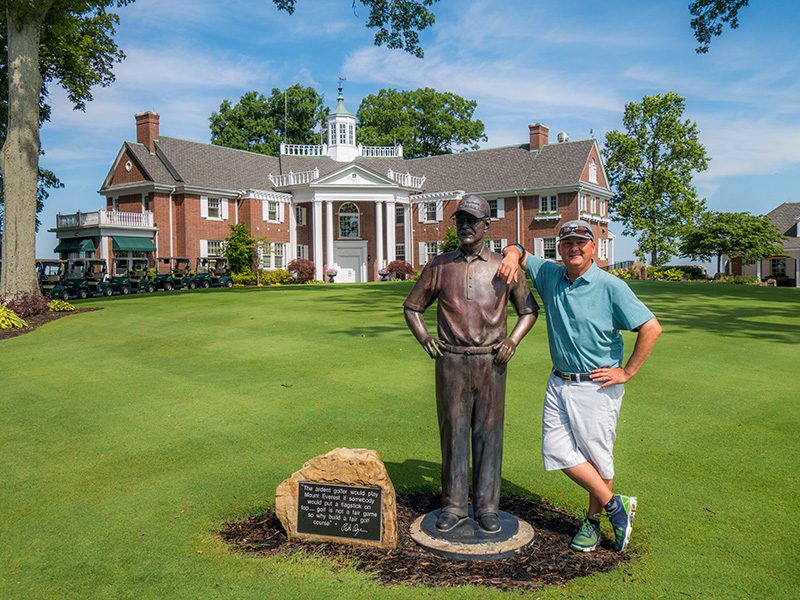
Pete Dye and me
The Pete Dye Course at French Lick is certainly one of the most difficult courses in the USA, if not the world. The course rating from the tips is an unheard of 80.0. The slope is a massive 148. It’s hard to translate those numbers for those who don’t understand rating and slope. A skilled professional on average would shoot an 80 on this course, on a good day.
The course plays to a par value of 72. The total yardage is 8,102. Amongst that hefty yardage is par-3 16th hole which measures 305 yards. If the length isn’t tough enough, there’s water down the entire right side.
Tee
The views presented to the golfer from the tees are tremendous, challenging, and worthy of not only a solid tee shot, but a solid shutter release of a nice DSLR camera.
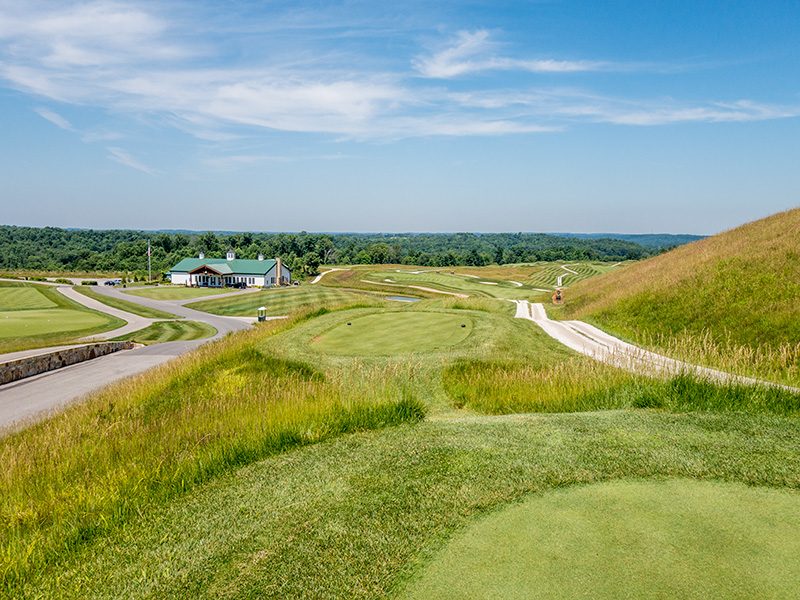
1st Tee – The sliver of fairway in line with the cart path is the target
Where to aim from the tee on the Pete Dye course is a tough call on nearly every hole. Visually the landing areas look extremely narrow and seem like they’re miles away. Wait a sec… that’s because they are extremely narrow and miles away. One must know how far they hit their drives or layup shots, exactly. Then execute a near perfect shot to hit that precise spot to keep a ball in the fairway. And I’m talking about the par-3’s! I kid. I kid. Sort of.
Review: Donald Ross Course at French Lick Resort
Categories: Course Reviews • Golf Course Architecture • Golf Courses • Golf For Women • HOG World Tour • Reviews • Travel
Tags: Donald Ross • French Lick • Indiana Golf
Dornoch, Scotland born Donald Ross began his golf career as an apprentice to Old Tom Morris at the Old Course in St Andrews. Old Tom was the greenskeeper for the Old Course in St Andrews and had designed many of the most famous courses in Scotland and the UK including Carnoustie, Prestwick, Muirfield, Machrihanish, Jubilee, and Balcomie Links. I’ve played a few of those.
Ross moved to the United States in 1899 where he began arguably the most successful architectural career in the history of golf. Ross is credited for designing 600 golf courses. Amongst those 600 are some of the world’s most famous and respected courses, which still stand the test of time. A few of Ross’s most notable courses include Pinehurst No. 2, Seminole, Oak Hill and Oakland Hills. A couple of others I like to add to the list are ones I’ve had the pleasure of playing, Burning Tree and Aronimink Golf Club. Ross’s courses are known for being natural and taking advantage of the lay of the land, not the “earth mover” type of golf architecture.
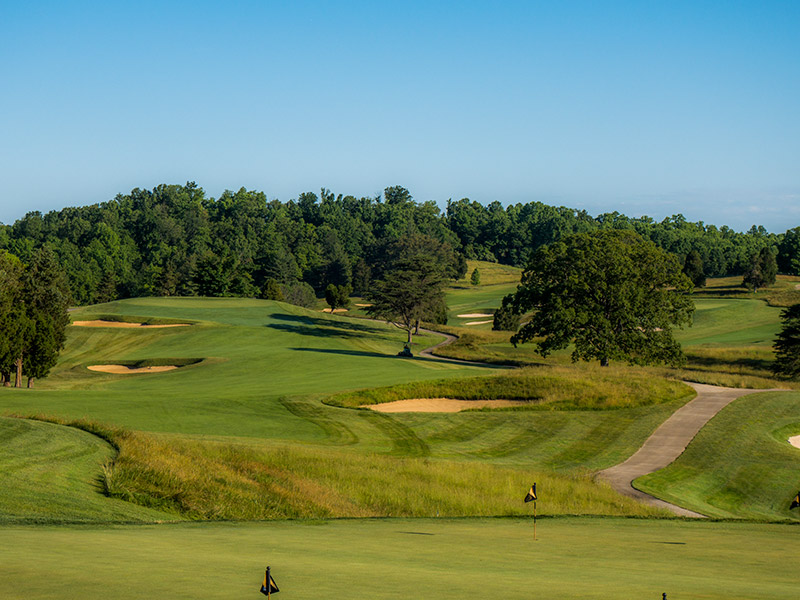
The Ross Course at French Lick opened for play in 1917 and has recently undergone a $5 million renovation to bring it back to Ross’s original design. Golf courses, like living beings, grow and change over time. In the renovation, bunkers which lost their nearly 100 year battle with the elements and nature were restored to their original specifications.
Overview
The Donald Ross course at French Lick is a par-70. Don’t let that fool you into thinking it is short or easy. In fact, the course clocks in at 7,030 yards which is long even for a par-72 course. The rating from the tips (the Gold Tees) is a strong 72.3 with a slope of 135. A solid test of golf. To accommodate players of all abilities and ages, there are four total sets of tees, the shortest measuring 5,050 yards.
Tee
The way each hole presents itself from the tee of the Ross course is so visually appealing. The landscape is hilly and features some very large elevation changes. The tees challenge the golfer to execute an accurate shot or find strategically placed penal areas including bunkers, hazards, long native grassy areas, and trees. Some tee shots are blind and the help of some course knowledge or at the least, a local caddy is a great thing to have.
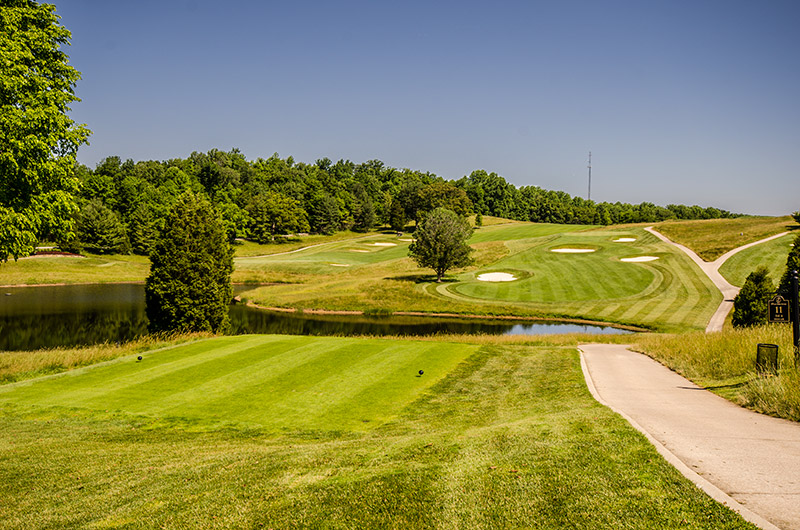
The numerous sets of tees are not boringly arranged on one flat piece of ground a few yards apart. Rather, each tee set offers the golfer different yardages, elevations, and angles to the target. Regular golfers could create a very different playing experience by simply changing tees from round to round, or even making up their own combo set.
Fairway
The fairways at the Ross course are welcomingly wide. That said, there are very few flat areas on the property. The golfer will be challenged to hit a straight from the fairway due to the undulations and uneven lies.
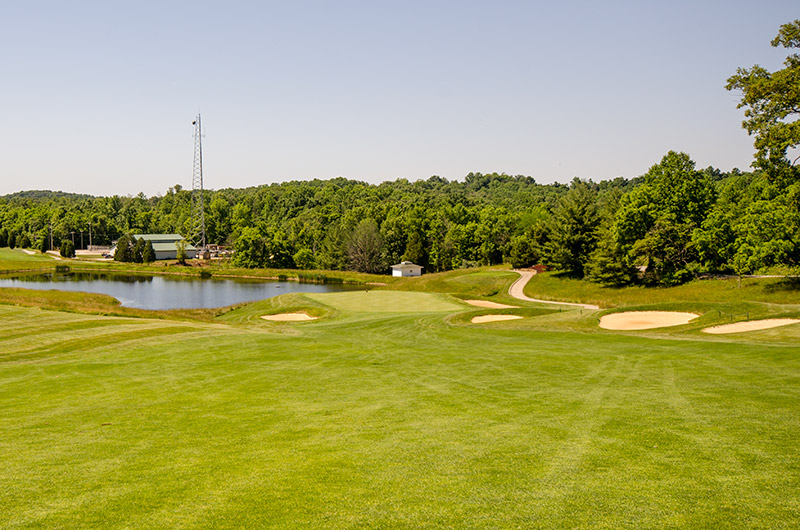
Strategically placed bunkers can and will penalize shots which are not placed in the fairway.
Green
Donald Ross is well known for his amazing greens at courses like Pinehurst, Oakland Hills, Aronimink. Ross’s greens at French Lick are truly amazing; the prime feature of the golf course. Many of the greens feature the Ross trademark “upside down soup bowl” design, where any shot or even putts too close to the edge are rejected and end up rolling off into collection areas or false fronts. Those upside down bowl greens (photo below) present some very difficult challenges in the short game. The player can try hitting a high soft shot, bumping a low shot into the hill and onto the green, or my default choice which is putting. Getting up and down from greenside at the Ross Course is an accomplishment.
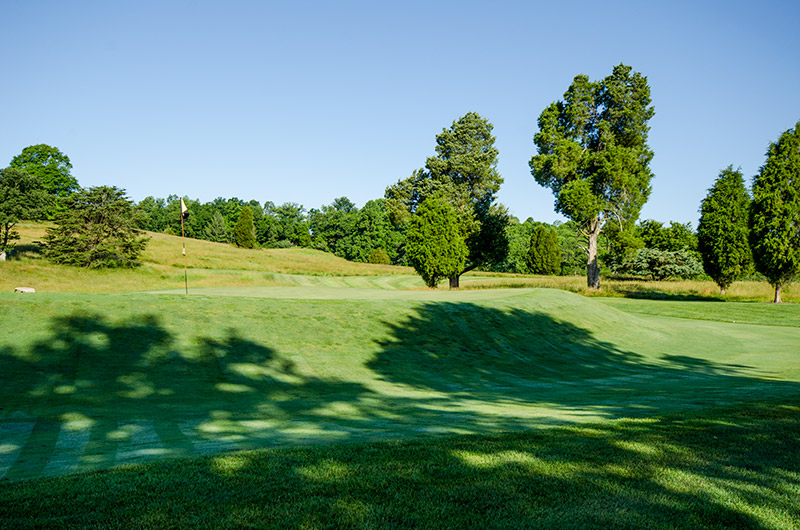
In fact, getting in the hole in two putts is an accomplishment. Due to the undulations, slopes, tiers and bowl edges, putting the Ross greens is the biggest challenge of the entire golf course. A two-putt on any green feels like a birdie. 3-putts can actually be a solid play.
Stay below the hole at all costs. Because of the speed of the greens and the incredible slopes and undulations, shots which end up above the hole are most often dead. Stay below the hole, even if that means missing the green short.
Clubhouse
The clubhouse at the Ross Course oozes history and class. The pro-shop is full of great equipment and apparel and a great staff who are extremely helpful and pleasant to interact with.
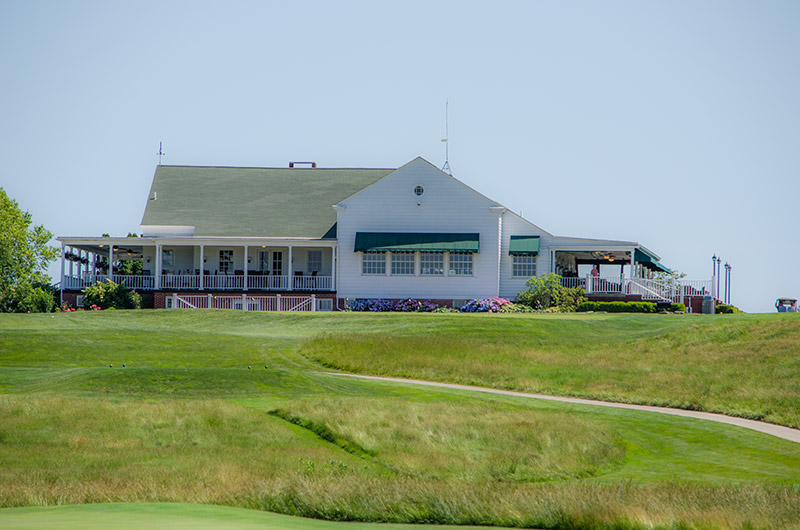
Hagen’s Restaurant has a large indoor and outdoor seating area (right side of above photo). I enjoyed great food and great service between rounds on a 36-hole day. Hagen’s is named after Walter Hagen, who won the PGA Championship there in 1924.
Practice Area
The Ross course has an adequate putting/chipping area with a fantastic view (first photo), and very close to Hagen’s to insure the frosty beverages are topped off.
One drawback to the Ross and my only critique: there is no driving range.
Conclusion
The Ross Course is a pristine gem, full of history and personality. It will challenge golfers of all abilities and especially those like me, who consider themselves good putters. Be sure to plan a trip to French Lick to experience this historic golf course. The French Lick Pete Dye course (review coming soon), the Ross Course, and the French Lick Resort and Casino make for a tremendous golf buddy trip.
1 2 Next »

